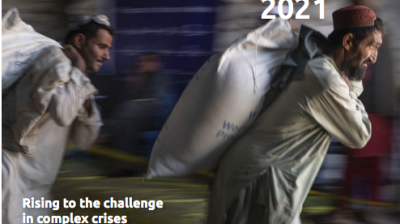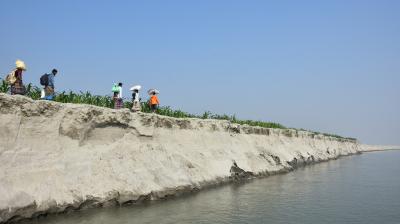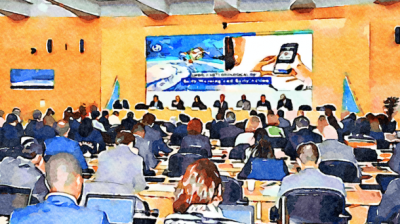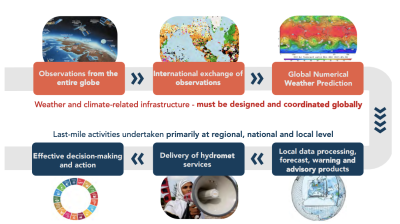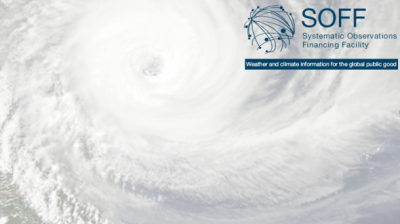Towards a Global Hydromet Compact
A pathway to increase the effectiveness and sustainability of investments in weather, climate and hydrological services has been adopted at a conference convened by the World Meteorological Organization, the World Bank and the Global Facility for Disaster Reduction and Recovery (GFDRR). The central theme of the conference on 21-22 March was “Beyond business as usual – closing the capacity gap.” It brought together 100 representatives from national meteorological and hydrological services, multilateral development banks and financing and technical institutions.
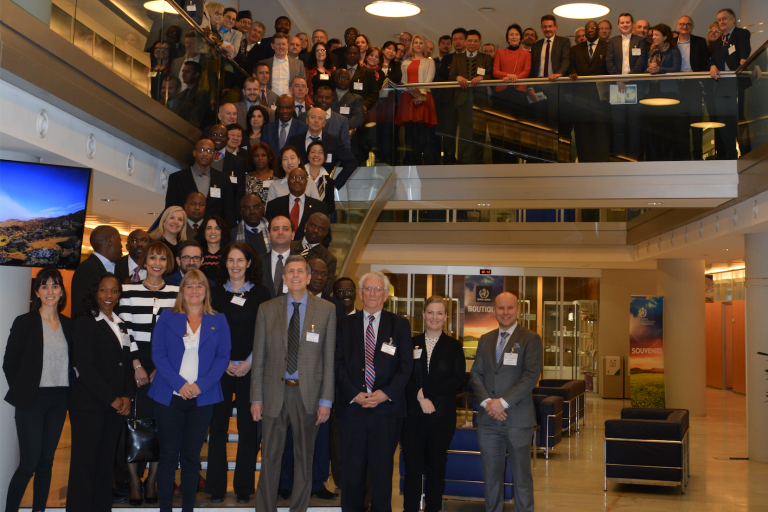
A pathway to increase the effectiveness and sustainability of investments in weather, climate and hydrological services has been adopted at a conference convened by the World Meteorological Organization, the World Bank and the Global Facility for Disaster Reduction and Recovery (GFDRR).
The central theme of the conference on 21-22 March was “Beyond business as usual – closing the capacity gap.” It brought together 100 representatives from national meteorological and hydrological services, multilateral development banks and financing and technical institutions.
“To go beyond business as usual we are going to need more and stronger partnerships. Working together as partners in a complementary way will help us mobilize more resources, bring new knowledge and solutions to the table and efficiently support countries to implement quality weather and climate services,” said Laura Tuck, Vice President, Sustainable Development at the World Bank.
Topics included risks posed by weather, climate, and water to sustainable development; opportunities to scale up what works; and emerging financial mechanisms to support and modernize meteorological and hydrological services.
According to the World Economic Forum 2018 Global Risks Report, four of the five most pressing risks the world is confronted with are related to weather, climate, and water. Demand for the provision of weather, climate, water services is rapidly increasing.
However, many national hydrometeorological (hydromet) institutions in developing countries face major performance challenges. There is a need to close the capacity gap between developed and developing countries. The leveraging of effective partnerships for investment is seen as one of the main ways of achieving this goal.
WMO Deputy Secretary-General Elena Manaenkova said that the WMO Strategy 2020-2023 creates a sense of urgency for country-level action by setting a long-term goal on closing the capacity gap on weather, water, and climate services between developed and developing countries. “Scaling up effective partnerships for investment is set as a center piece to achieve this goal,” she said.
The conference brought four main outcomes:
First, the idea of developing a Global Hydromet Compact emerged as a proposal of the Conference. It would create the framework for scaled-up, coordinated, sustained, and impactful investments in hydromet and early warning services. It would bring together developing countries, financial institutions, development partners, and the WMO community with a commitment to act beyond business as usual
Second, scaling up programmatic approaches, taking advantage of increasingly available funding from the Green Climate Fund that expects better and better coordinated funding proposals.
Third, scaling up provision of expert services to develop and implement better, more effective, and more sustainable hydromet projects.
Fourth, developing a web-based information platform providing value to the whole hydromet community, beyond the scope of WMO’s current Country Profile Database.


